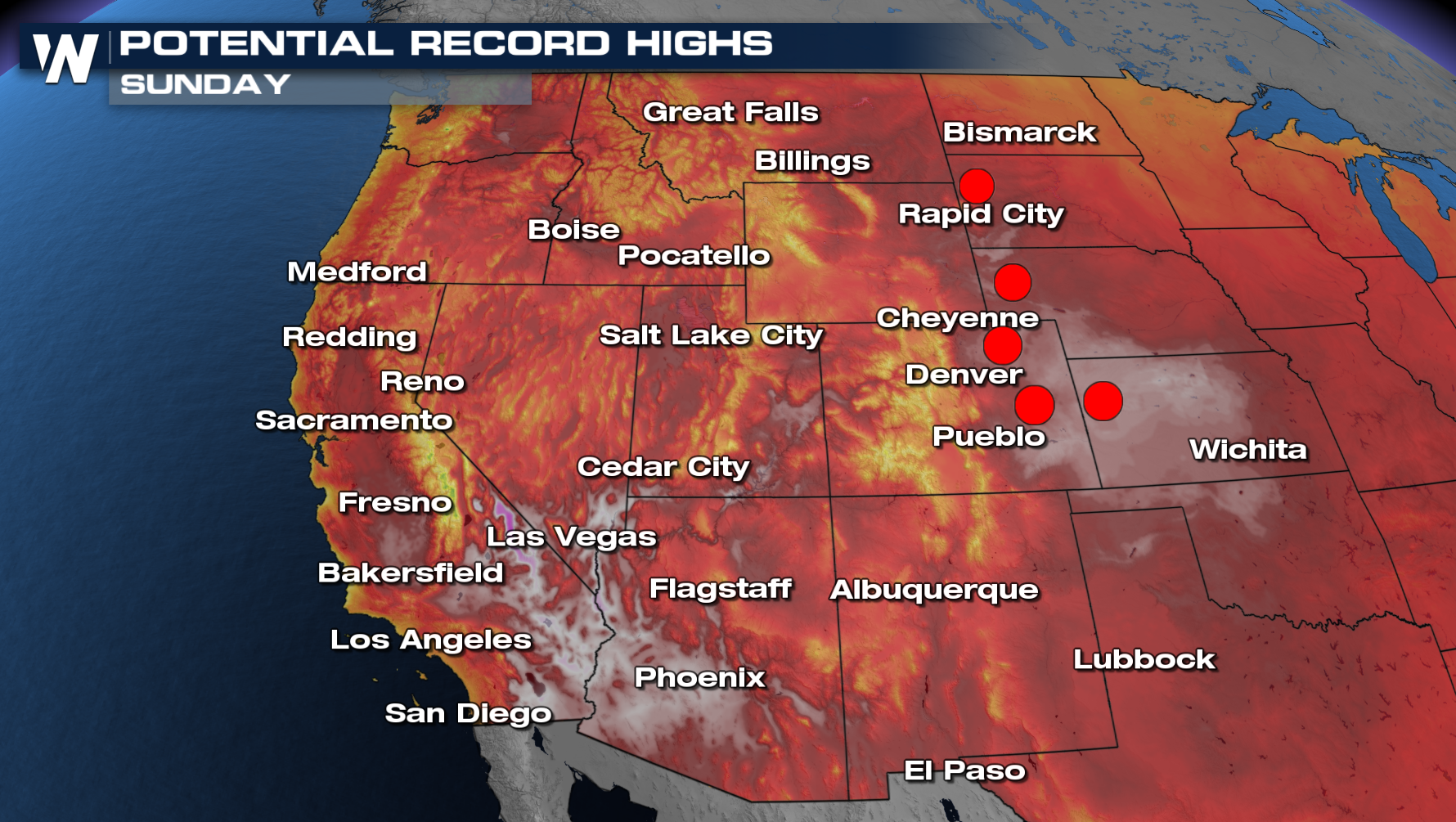BY CHELSEA HARVEY & E&E NEWS

Sprinklers help people to cool off in Long Island City, N.Y., as temperatures soared on June 21, 2024.
Selcuk Acar/Anadolu via Getty Images
CLIMATEWIRE |
That was the message from a panel discussion Wednesday at Columbia University. Officials from Miami and New York City shared their heat research wishlists, and social studies — centered on high-risk populations — made the top of the list.
The use of cooling centers — specifically, who goes to them and why — was a big question for Isabelle Thomas, a policy adviser in the New York City mayor’s office.
“Why do people go to cooling centers? Why don’t people go to cooling centers?" she asked. "What is their perception of the urgency — or lack thereof — as it relates to extreme heat?”
She noted some communities face more risk from skyrocketing temperatures, such as outdoor workers and people experiencing homelessness. Better insight on the experiences of these vulnerable populations would help decisionmakers craft more effective heat-related policies.
“We still in New York City are lacking some data on occupational heat exposure and health impacts, specifically as it relates to food vendors and delivery workers and other workers who are outside in the city,” Thomas said.
Cities also need better data on the number of people who die or fall sick during heat waves, said Jane Gilbert, the chief heat officer in Miami-Dade County. As of right now, these estimates are often vastly undercounted.
Extreme temperatures can directly lead to heat exhaustion, heat stroke or even death. These cases are easy to spot. But heat can have indirect effects on human health as well, such as exacerbating preexisting health conditions, increasing the risk of workplace injuries or affecting mental health. These indirect effects often go unrecorded on hospitalization records or death certificates.
“Really, direct heat deaths, illnesses, hospitalizations is the tip of the iceberg of health impacts,” Gilbert said.
Studies investigating how many people are actually hospitalized or dying from extreme heat — as well as where it’s happening and which populations are the most affected — can help policymakers design better protections for vulnerable communities.
“For us to design and prioritize interventions, having that situational understanding of where these illnesses and deaths are — where that exposure is happening — is very important for us,” Gilbert said.
Community Scientists to Map Urban Heat Inequities in 11 States
- WeatherNation
WORSENING URBAN HEAT ISLANDS
There are also stark differences between neighborhoods within the same city, depending on their density and access to green space.
- And studies have found that low-income families and people of color are more likely to live in hotter neighborhoods.
Both New York and Miami have implemented heat action plans, with goals to expand cooling resources and dampen rising urban temperatures.
Other cities across the country have plans of their own.
Phoenix and Los Angeles, like Miami, have hired chief heat officers.
- Cities from Philadelphia to Houston have designed emergency response plans for heat waves and developed plans to increase their heat resilience.
- Even King County in Washington, which includes Seattle, developed its first extreme-heat mitigation strategy after the record-breaking Pacific Northwest heat dome of 2021.
Still, experts say more action is needed as temperatures rise.
“Our lives have to change and our lifestyles have to change and the way that we go about our business and our daily lives during hot weather has to change,” Thomas said. “But it doesn’t necessarily have to be for the worst. I think we have a lot of opportunities to reshape the way that we’re experiencing our daily lives in order to accommodate and stay safe during extreme heat.”
-----------------------------------------------------------------------------------------------------------------------
CHELSEA HARVEY covers climate science for Climatewire. She tracks the big questions being asked by researchers and explains what's known, and what needs to be, about global temperatures. Chelsea began writing about climate science in 2014. Her work has appeared in The Washington Post, Popular Science, Men's Journal and others.
June 2024 marks 12th month of global temperatures at 1.5°C above pre-industrial levels
For the globe as a whole, it was the warmest June in the ERA5 record and the 13th month in a row that was the warmest in the ERA5 record for the respective month of the year. Although this is unusual, a similar series of monthly global temperature records was seen in 2015–2016.
The global-average surface air temperature was 16.66°C; 0.67°C above the 1991–2020 average for the month and 0.14°C above the previous high set in June 2023. The ongoing monthly temperature records are reflected in the global-average temperature for the past 12 months, which is also the highest on record, at 0.76°C above the 1991–2020 average and 1.64°C above the 1850–1900 pre-industrial average.
The average sea surface temperature (SST) over 60°S–60°N for June was also the highest on record for the month, at 20.85°C. This is the 15th month in a row that the SST has been the warmest in the ERA5 data record for the respective month of the year.
Global-mean surface air temperature anomalies relative to 1991–2020 for each June from 1979 to 2024. Data source: ERA5. Credit: Copernicus Climate Change Service/ECMWF.
"June marks the 13th consecutive month of record-breaking global temperatures, and the 12th in a row above 1.5°C with respect to pre-industrial. This is more than a statistical oddity and it highlights a large and continuing shift in our climate. Even if this specific streak of extremes ends at some point, we are bound to see new records being broken as the climate continues to warm. This is inevitable, unless we stop adding greenhouse gases into the atmosphere and the oceans,” said Carlo Buontempo, Director of the Copernicus Climate Change Service (C3S).
In Europe, the average temperature for June 2024 was 1.57°C above the 1991–2020 average, making the month the joint-second warmest June on record for the region. Temperatures were most above average over southeastern regions and Türkiye, but near or below average over western Europe, Iceland and northwestern Russia.
Read the June 2024 surface air temperature update in full.
The month was wetter than average over parts of North America, with a series of storms, including Hurricane Beryl, which became a major hurricane at the end of June and went on to impact several areas in early July. It was also wetter than average over southwestern and southeastern Asia, southernmost Africa, and parts of Australia and South America.
In Europe, June was wetter than average over Iceland, as well as central and most of southwestern Europe. Heavy precipitation led to floods in parts of Germany, Italy, France and Switzerland.
Drier-than-average conditions were seen across parts of North America, several regions of Asia and most of South America. Severe wildfires occurred in northeastern Russia and central South America.
It was also drier than average over Ireland, most of the UK, Fennoscandia, southern Italy and much of Eastern Europe, particularly around the Black Sea.
Read the June 2024 hydrological variables update in full.
Arctic sea ice extent in June was 3% below average. This is close to the values observed in most years since 2010.
Antarctic sea ice extent, however, was the second lowest for June in the satellite data record. It was 12% below average, behind the lowest June value of 16% below average observed in 2023.
Read the June 2024 sea ice update in full.
Press contacts, press releases in several EU languages and other materials are in our Press section.
Monthly Summaries
Surface air temperature
This series of monthly maps and charts, generated from ERA5 data, covers global and European surface air temperatures.
Sea Ice
We produce sea ice maps every month. Based on ERA5 reanalysis data, these provide near real-time monitoring of the polar ice caps.
Hydrological variables
This series of monthly maps and charts, based on ERA5 data, covers several variables: precipitation, humidity, and soil moisture for Europe and the extra-tropical regions.
Every month the Copernicus Climate Change Service provides an update on temperatures, hydrology and sea ice, showing the current condition of the climate. The Climate Bulletins include charts and maps with the evolution of key climate change indicators, mainly based on C3S’s reanalysis dataset ERA5.


.jfif)

.jfif)






No comments:
Post a Comment